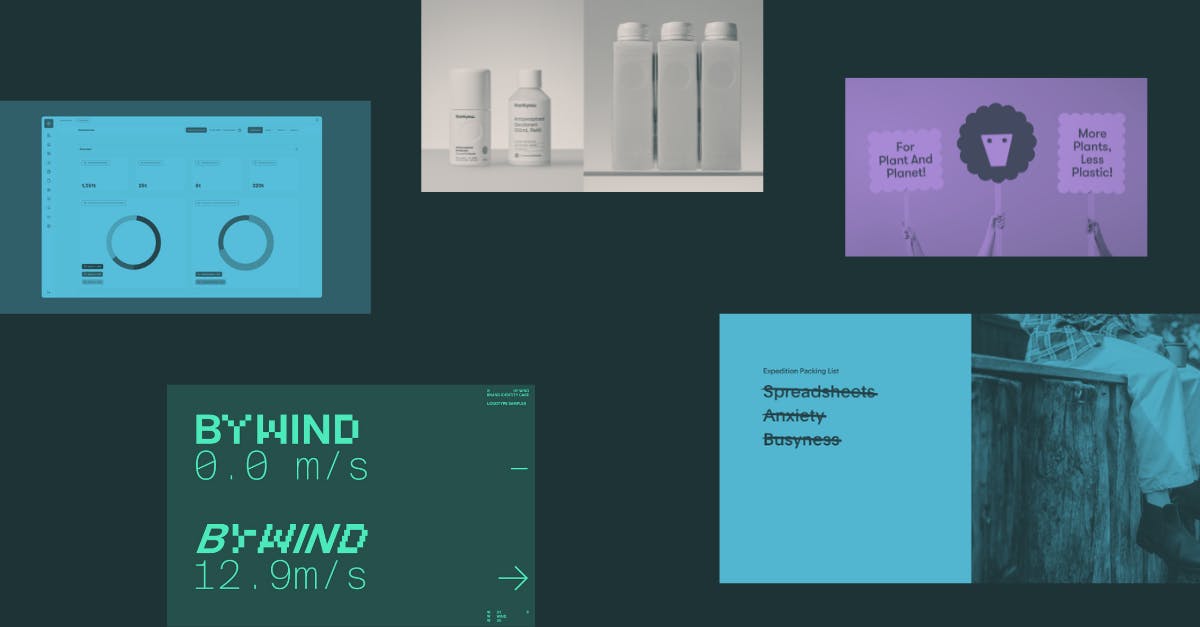
From meaningful and purposeful, to brand transparency
Written by
Jordan Stokes, Creative Director
Most if not all brand professionals are guilty of encouraging the use of positive buzzwords when developing strategy, tone of voice or brand personality in whatever form for their clients. It was very much ‘purposeful’ or ‘meaningful’ for a long time with ‘impactful’ having it’s own moment right now.
Something I’m obviously very aware of.
All brands are always looking to be authentic, mean what they say and not try to be something they’re not; Even if that thing is big, garish and in your face. Lot’s of brands are honest in the way they engage with their audiences and it usually comes through in the way they talk about themselves or present themselves, maybe more as an aesthetic or tone. These traits are often nuanced and can depend on a whole host of factors.
I believe that honesty means that when asked you answer truthfully and authentic just means you’re true to who you are.
But what if a brand’s customers or audiences don’t know what to ask, or understand specialist areas of the business (like sustainability)? Does this mean that brands don’t feel obliged to communicate what they’re doing? Feels a bit murky, right?
Transparency on the other hand is much more open. It’s brands saying ‘come and see for yourself’.
As the world of sustainability, action and brands actually doing the right thing very quickly moves into the mainstream, are we about to move away from brands having ‘meaningful’ conversations with their audiences and into them being more transparent and forthcoming with how they act behind the scenes?

What makes a transparent brand
What brands are doing from a sustainability perspective; setting targets, managing their resources, production and responsibilities by working to reduce any negative impact (and even positively impact in some cases) can often be quite technical, littered with caveats and very specialist at times.
Currently, when we do see it filter into the mainstream it often appears as something so lofty that you’ve lost all detail and the connection to the evidence. I think of it a bit like hearing politicians answering questions.
The information and results can also not look or sound great either. A lot of businesses are worried that they won’t hit the targets they set, which as reported by Accenture in November 2022 is most likely true for a vast majority of the major businesses setting targets.
Sometimes organisations can’t actually do enough because the systems they are a part of and the technology they use isn’t ready to support them, so in most cases they shy away from communicating outwardly.
However; organisations that understand the need for brand transparency are making this narrative a part of how they communicate with their stakeholders and audiences.
A good example of this has played out recently with Lego.
A brand loved by all who have been a sustainability leader for forever, recently announcing that they were needing to abandon one of their key initiatives to reduce emissions and the impact of their product because they physically couldn’t re-imagine their entire production process in time.
They have been both commended by some and slammed by others, but this act of brand transparency is just what more brands need to embrace if we want to inspire collaboration and action from both industry and consumers.
Read more here & here & here
Another favourite example is Nudie Denim.
The global denim manufacturer has a strong sustainability approach, actively reports on their strategy and targets and engages consumers to make better choices; but, it’s their supply chain transparency activation that excites me the most.
On any product on their website, you can discover their entire supply chain, where the producer or production house is located, whether it has been audited and even download those reports. It’s a simple, but really impressive digital content piece that gives customers the ability to look under the hood at how their clothes are made in lots of detail.

These examples really highlight the difference (from a brand and communications point of view) between transparency and honesty.
Our services include brand strategy, identity creation and refinement, product and service design, graphic design and art direction, digital, campaigns and experiential.
How we create more transparent brands
I’ve spent the last 16 months in a new world when you compare the first 15 years of my career.
We moved from a more general brand and creative agency to be more specialist as part of a global impact consultancy. This new world has seen us working with new types of clients; not only in the businesses we work with but also the people within those businesess we engage.
In this new world we’re supporting amazing people who are doing amazing things to solve some of businesses most fundamental issues; and our role is to help them actually share what they’re doing with the world and be confident to share as much as possible, knowing they have the evidence to back it all up.
It takes a lot for brands to completely open their doors and windows to the world and let everyone see what they’re doing (in some instances, where reporting is concerned they may not have a choice in the near future).
If brands want to build, engage and educate the kinds audiences of that we need, to make the better choices that the world needs they have to start being braver in the way they set goals (and why) then communicate how they’re tracking against them.

In doing our work we apply our brand mantra in how we approach each project and what we need to ask from our clients.
We call it the ‘Edge Way’ and it quite simply combines science, strategy and storytelling to build the foundations a brand needs to communicate their purpose, their sustainability goals and their actions effectively.
Here are 5 strategies for brands to effectively transition to greater transparency
- Build your case
Understand what you need to be able to back up the work you’re doing and the goals you want to set. This could be through recognised certifications, life cycle analysis or establishing a carbon footprint.
One of the most interesting parts of this process, is when we are able to use this evidence base to develop brand and ESG strategy that truly connects and embeds sustainability into a brand at it’s core.
- Make it an experience
Bringing your internal and external audiences on the journey with you not only builds momentum behind your goals and actions, but it also helps communicate what needs to be done and why in a way that’s engaging, inspiring and people can connect with. By activating sustainability, you can make it a part of everyone’s role and something they can be a part of.
- Get the foundations right
Most brands aren’t actually set up to communicate complex data, scientific evidence or multi-level sustainability stories on top of their day-to-day. By bolstering your brand asset library across data visualisation, imagery and language; to allow greater flexibility and focus on sustainability topics you can ensure messages cut-through and stay clear of feeling too ‘greenwashy’ and throw away.
- Connect, collaborate & empower
By connecting sustainability teams, with marketing and brand teams and empowering those teams to communicate sustainability effectively; brands can keep an open channel with their audiences to continuously update on their goals and actions. Our work sees this come to life through training, workshops and the development of tools or functions that build on a businesses existing processes.
- The benefits of reporting
Sustainability reporting has traditionally been seen and felt by some as a resource drain, resulting in a fluffy marketing document that doesn’t disclose detail or drive any action. But by re-thinking how your brand reports on your goals, action and the impact you’re having on the world you can create a more engaging experience around how you bring brand transparency (and dislosure) to life within your customer experience and directly to your audiences.
As brands doing this well will know, it’s not just content and communications benefits that successful reporting can yield, but there are operational and strategic gains to be made too.
We unpack this more in our original discussion paper ‘How to Thrive In The New Era Of Disclosure’.

What’s next for 'brand transparency'
As with other branding trends that come and go, hopefully we’ll see a shift away from brand purpose and ‘honest’ brands, to more outright transparent brands in the near future.
Brands that build their strategies and communications on evidence, then openly share with the world how they are tracking against the commitments they have made. I hope this builds more confidence in consumers, customers and audiences of all kinds that they can trust the brands that they choose, because of the way they communicate.
Having worked on more traditional brand strategy for a number of years, I also feel excited by a different approach that could combine science, strategy and storytelling to create more progressive, sustainable and transparent brands.
To hear more about the work we do at Edge Impact to help businesses discover the power of brand transparency and creating truly sustainability focussed brands get in touch for a chat.
From brand strategy to digital campaigns, we help organisations of all sizes embed sustainability authentically.
Learn more about our Brand, Communications & Creative Services.
What we do
As experts in the full spectrum of sustainability topics, we are here to guide you through the complexity. Our team includes specialists from across the globe; from strategists to economists, engineers to creatives. Since 2008, we have been helping businesses, organisations, industries and societies make transformation happen.
Our areas of expertise are focussed around the following areas:
Leadership and Transformation
ESG and Strategy
Decarbonisation and Climate Resilience
Circular Economy and Lifecycle Thinking
Procurement and Supply Chain
Nature and Biodiversity
Brand, Communications and Creative





